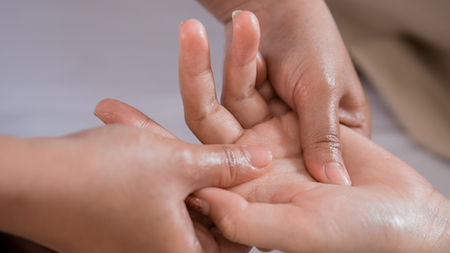Massage Therapy: Debunking 5 Common Misconceptions

From ancient civilizations to modern backyards, massage therapy has been a part of human interaction. But one thing almost as old as the treatment itself is the numerous misconceptions massage therapists have fought tirelessly to remedy.
Firstly, massage therapy is a holistic form of medicine that helps to heal the body, mind, spirit, and soul. Massage therapy works for a wide range of conditions: from back pain and headaches to arthritis, digestive issues, insomnia, and even cancer treatment. It can also help manage stress levels and improve athletic performance — among other benefits.
With the numerous benefits outlined, it is also common to see some false misconceptions. Let’s take a look at five common misconceptions about massage therapy:
1. Massage Only Moves Muscles Around
TRUTH: People often think massage therapy does nothing more than moving their muscles around. This misconception is understandable for bodywork you see spas and beauty shops.
However, when performed by a licensed massage therapist, this concept expands and goes above and beyond the typical application of crude kneading and rubbing motions. In fact, many people don’t know it can help you feel better by releasing tension that can accumulate in different areas of your body.
To that effect, massage therapy does not only move muscles around. It also stimulates circulation and promotes healthy tissue repair.
2. Massage Therapy Is Only for People With Injuries or in Pain
TRUTH: While it is true that many people go to massage therapists to relieve pain or treat injuries, this isn’t the only reason why people visit these professionals. Massage has many therapeutic benefits for perfectly healthy people who want to relax their bodies and mind.
Massage therapy is particularly effective in treating chronic pain, stress, mental health issues, and sleep disorders. It is an overall experience that goes beyond the physical body.
3. Massage Always Leaves You Sore the Next Day
TRUTH: This misconception may have started because many people misinterpret what happens during a typical massage session as pain and discomfort. Massage therapy helps relieve pain and reduce stress, but it won’t always make you more sore than usual. If you feel sore after your massage, it can be a sign that something was done incorrectly — either the therapist used too much pressure or worked on muscles too forcibly.
4. Massage Isn’t Safe During Pregnancy
TRUTH: Massage therapy is a safe option for expecting mothers. Many women experience back pain or other aches and pains during pregnancy, and massage can help alleviate this discomfort by increasing blood circulation to the abdomen and relaxing muscles. Massage therapists are trained to work with pregnant women—they will avoid areas of the body that have an increased risk of injury and apply only the lightest of pressure.
5. All Massages Are the Same
TRUTH: There are several types of massage techniques you can choose from when receiving massage therapy from a licensed professional. Different techniques use different movements and strokes to achieve different results.
For instance, Swedish massage is one of the most common today because it focuses on relaxation and reducing muscle tension.
In contrast, deep tissue massage is more intense. It focuses on releasing muscle knots that form due to injury or overuse. Trigger point therapy is another type of deep tissue massage that targets specific areas of the body with the injury. Massage therapy goes beyond a particular system or technique.
The Bottom Line
These 5 common misconceptions about massage have been debunked, as research shows very few negative things associated with getting a therapeutic massage. In fact, many people experience increased energy and lower stress levels from massage therapy. Hopefully, these myths have been cleared up, and your interest in massage therapy has been sparked. If you’ve been wanting to get a massage, there’s no better time than now.


Leave a Reply
You must be logged in to post a comment.